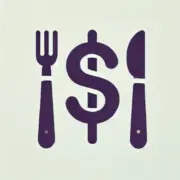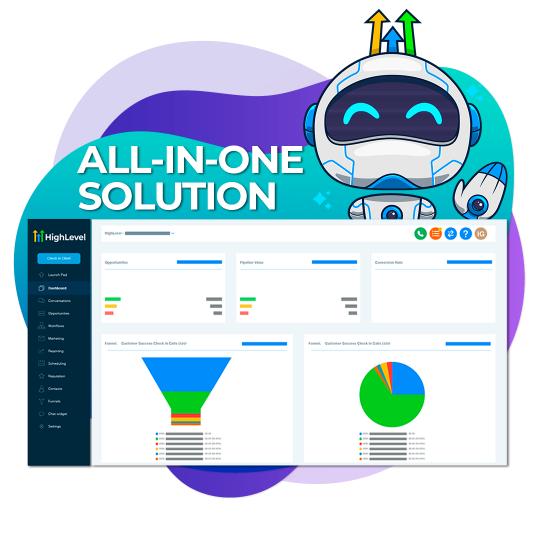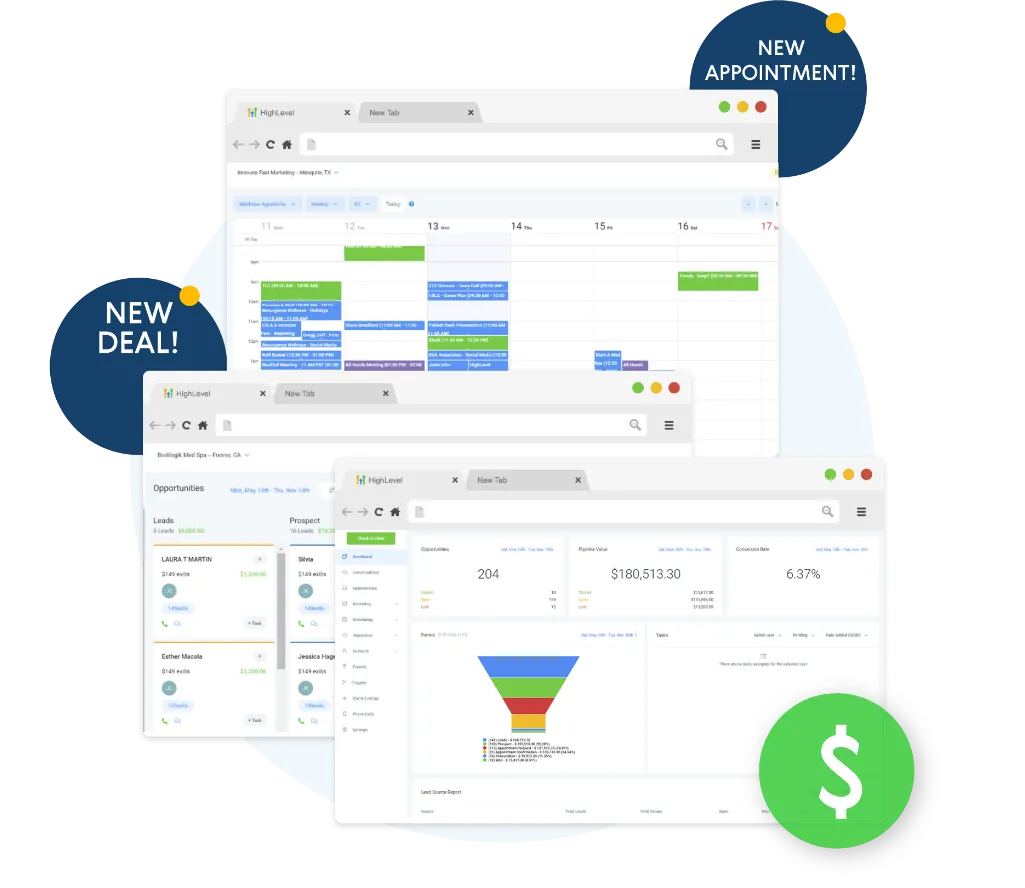When you train your team to use CRM tools, you get much more than you spend. For every dollar you put in, you get nine dollars back. Your team can help customers 30% faster and fix problems before they grow big. Workers save lots of time – up to 10 hours each week – by letting the system do the hard work. Your trained team can solve most problems the first time a customer calls. This means happy customers and more money saved. When you teach your team the right way to use CRM, both your people and your tools work better.
Feeling overwhelmed by missed leads and disorganized workflows?
Discover the award-winning platform that automates follow-ups, tracks every lead, and keeps your business running smoothly—all in one place. Thousands of businesses are already transforming their sales and marketing with this trusted solution. Don’t miss out—start your 14-day free trial today and click now to uncover exclusive, limited-time special offers!
Understanding CRM Training Value

CRM training helps teams work better with customers. For every dollar a company spends on training, they can make about $9 more in sales. Good training helps workers use the software well and keep customer info safe.
When teams learn about CRM all year long, they get faster at their jobs. They can help customers better. They can track sales leads better. They can see what works and what doesn't. They also learn to talk to customers in better ways.
Training isn't just about spending money. It helps the whole team grow and do better work. It makes the business stronger and ready for the future.
Productivity Gains Through Training
Teams work better when they learn how to use their tools well. When people get good CRM training, they can do their jobs much faster – about twice as fast! Teams save 5-10 hours each week by letting the computer do the simple tasks.
When teams learn their own special jobs, they make more money – about 2% more. Teams who keep all their customer info in one place do better work. They talk to each other more easily too. The best part? Sales happen faster, up to two weeks quicker. And helping customers costs less – almost half as much!
Want the best results? Make sure each person learns what they need for their job. Let them practice in a safe space where mistakes don't matter.
Ready to simplify your business operations?
Streamline your workflows and boost productivity with a CRM designed to save you time and effort. From tracking leads to automating follow-ups, this platform does it all. Discover what’s possible—learn more about how it works and see why so many businesses rely on it every day.
Measuring Financial Returns

We can track how our CRM training helps make money in three simple ways. First, we look at how many more sales our team makes. Second, we see how much money we save when our team helps customers faster. Third, we count the time people save doing their daily work.
We look at the numbers before and after the training. This helps us see if more customers buy from us, if we fix problems faster, and if our team gets work done quicker.
To find out if the training was worth it, we:
- Add up all the extra money from new sales
- Count the money we save from faster customer help
- Figure out how much money we save when people work faster
This shows us how much money the training helped us make or save.
Calculating Direct Revenue Impact
Getting more money from your CRM is simple. First, you need to see how much money you make from it. Take what you earned and minus what you spent. Then divide that by what you spent. Times it by 100.
Look at your numbers before and after you start using CRM. This shows you how much more money you made.
Watch these three things:
- How many sales you close
- How big each sale is
- How many customers stay with you
A company called Pathfinder made twice as much money by watching these numbers.
To find out how much extra money you made, take away all the costs of your CRM. This means the cost of the software, computers, teaching people how to use it, and keeping it running.
Most companies make $8.71 for every $1 they put into CRM. If you use it really well, you can make up to 4 times more money than what you spent.
Track Support Cost Savings
When your team learns to use CRM well, they save your company money. Staff who know the system make fewer mistakes and work faster. They can cut costs by 15%.
The best part? Half of all companies who train their teams do better than others who don't.
To find out how much you save, use this simple math: Take what you gained, then subtract what you spent. Next, divide that by what you spent. Last, times it by 100.
Keep track of what you spend on the system and training. Also watch how it helps you keep better records and happy customers.
For every dollar you put into CRM training, you can make back $8.71 in sales. Just make sure to check how things are going and fix what isn't working.
Team Productivity Metrics
Teams work better when we keep track of how well they're doing.
Let's look at simple ways to measure success.
First, we count how many tasks the team gets done. This shows us if work is moving well. We also look at how much money each worker brings in.
We time how long it takes to finish work. This helps us know if teams are fast or slow. We look at costs too, to make sure we spend money wisely.
Every few months, we check these numbers. We compare old and new scores to see if teams are getting better.
When we match these scores to our goals, we can show how training helps make the team stronger.
Still struggling to keep your business organized?
Take the guesswork out of managing leads and follow-ups with a platform trusted by thousands of businesses. Say goodbye to missed opportunities and hello to a seamless sales process. Act now—try it free for 14 days and discover how easy it is to stay on top of your workflow. Don’t wait—exclusive offers won’t last long!
Employee Performance Metrics
We track how well our team sells by looking at simple numbers.
We watch how many leads turn into sales and how fast our team helps customers.
When we see these numbers on our screens, we can spot where things are slow or need help.
Looking at these numbers helps us make the team better at selling and helping customers.
Tracking Sales Team Progress
Your team's success is important. Let's look at how to watch their sales work in a simple way.
Use your CRM to see how everyone is doing. Look at how many leads turn into sales. Check how much money comes in each month. Watch how many deals are in the works.
Keep an eye on these three things:
- How many leads move to the next step
- How many people ask for demos
- How many deals your team wins
Make sure all your team uses the CRM every day. They need to put in their work the same way. When everyone adds their info about calls and meetings, you can see how well the whole team is doing.
Get your team to:
- Add new contacts right away
- Update deals daily
- Write down what happens in every call
This way, you'll know exactly how your sales team is growing and where they need help.
Measuring Support Response Times
We want to help our customers quickly when they need us. To do this, we look at two simple things:
- How fast we first answer them
- How long it takes to help them overall
Think of it like timing how fast you run a race. We check these times to make sure we're helping people fast enough.
Our computer tools can count these times for us. They tell us:
- Which problems take too long to fix
- Which helpers need more training
- Where we can do better
When we know these things, we can fix them. This helps us give better service to everyone who needs our help.
Looking at these times helps us stay fast and friendly. Our customers feel happy when we help them quickly.
Customer Satisfaction Impact

Your team helps customers better when they know how to use CRM tools well. When staff learns these tools, good things happen. More customers feel happy. Fewer people have problems to report. Your team can help customers faster too.
Teams who know CRM tools well make customers happy in many ways:
- They fix problems the first time customers call
- They make each customer feel special
- They build strong bonds that make customers come back
The numbers show it works:
- Customer happiness goes up 10%
- Customer problems drop 25%
- Help comes 30% faster
- First-time fixes rise 15%
- Customer scores jump 20%
Struggling to keep up with your growing business?
Simplify your processes and stay ahead with a CRM that adapts to your needs. Manage leads, automate tasks, and focus on what matters most—growing your business. Take the first step—explore the features today and see how it can transform the way you work.
Training Cost Analysis
When you train your team to use CRM tools, the costs start small but can grow big. A small shop might spend $3,000 to get started. You pay for the computer program and lose some work time while people learn.
The bigger your team gets, the more you spend. Really big teams with lots of workers can pay up to $450,000 to set it all up.
But don't worry – this money helps you make more sales. For each dollar you put in, you can make about $9 back.
That's why it's smart to teach your team how to use these tools well.
Direct Expense Breakdown
Let's break down what it costs to train your team on CRM.
There are four main things you need to pay for:
- The software and computers
- Help from experts
- Training for your team
- Lost work time during setup
When you plan how much money you need, think about costs now and later.
You will spend money on:
- Monthly fees for the software and new computers
- Expert teachers to help set up and train
- Books and help guides for your team
Your team will work slower at first while they learn. This means less money coming in. You can figure out this cost by looking at what you pay workers and any sales they might miss.
When you know these costs, you can make better choices about training your team. This helps them learn the right way from the start.
Hidden Training Costs
Training your team on CRM software costs more than you might think. When workers stop their normal jobs to learn, you need to pay others to fill in.
Plus, your team works slower while they learn the new system.
Big CRM tools like Salesforce need lots of training time. Your team must keep learning as new updates come out. You need to spend money on how-to guides, learning tools, and training rooms.
Numbers show that good training helps your bottom line. Teams that train well make more than double the money per worker. They also make more profit.
To get the most from your CRM, you need to keep training your team over and over.
Long-Term Investment Value
Training your team to use CRM tools helps make more money. For every dollar you spend on training, you can earn almost $9 back in sales. This makes training a smart choice for your team.
Good training helps your team in three ways:
- They work faster
- They put in better data
- They help customers better
To get the most from your training:
- Keep teaching your team as the system changes
- Make sure each person learns what they need for their job
- Get help from experts to make the system part of daily work
When you train your team well, they sell more and make customers happy.
Watch how each team grows with the training. This helps your business grow and saves money over time.
Long-Term Business Benefits

CRM training helps your business grow and succeed for many years. Your team will connect better with customers by giving them personal attention and quick help. This makes customers happy and keeps them coming back.
Your staff can get more work done because the computer does the boring tasks for them. CRM tools show you what your customers like and need right now. This helps you make smart choices about your business.
When you spend money on CRM training, you get a lot back. For every dollar you put in, you can make almost nine dollars back. This happens because your team sells more and does better work.
Your business can start making money faster and keep growing by taking good care of customers.
Implementation Success Factors
Getting CRM to work well means focusing on four key things. First, make sure it fits with your big plans. Second, roll it out step by step. Third, train people well. Fourth, make sure all your tools work together.
You need your top leaders to back this plan. Make sure everyone knows what you want to do and why.
To make it work:
- Start small and let people help plan from the start
- Show people how to use it in their daily work
- Keep your data clean and easy to use
Help your team deal with all the changes. Give them the right training. Write down how things should work. Be there to help when they need it.
Try to use the built-in settings instead of making new code. This will help your system last longer and work better.
Overcoming Training Resistance

Getting your team to love a new CRM system can be hard. Some people worry about change. Others get scared of new tech. And many just don't think it will help them.
To make it work, let your team help pick the new system. Show them how it will make their work easier. Let them try it out with tasks they do every day. Pick some team members to be helpers who can answer questions.
When people can practice without fear, they start to feel better about the new system. Listen to what your team says about it. Fix problems fast. Give rewards when people do well. Help each person learn in a way that works for them.
Keep talking with your team. Soon, they'll want to use the system and help make it even better.
Building Sustainable Training Programs
Let's make our CRM training work better for everyone! We want to teach people in a way that sticks and helps them do their jobs well.
We mix different ways to learn:
- Fun group classes where people can talk and share
- Easy online lessons you can do at home
- Learning from friends at work
We keep track of how well people learn by:
- Watching how they use what they learned
- Asking them what they think
- Seeing if work gets better
We write down clear steps for everyone to follow.
When things change, we update these steps.
We use good tools to teach, and we want everyone to keep learning new things.
We ask people what works and what doesn't. This helps us make the training better each time.
We also make sure to add new tips when we find better ways to do things.
Remember: Good training helps everyone do their best work!
Conclusion
We can help our teams do better with good CRM training. When we teach people how to use CRM tools well, they sell more. In fact, teams who learn CRM well can sell up to 29% more in just one year. Keep track of how well people do. Set clear goals. Make the training better over time. This helps your team grow and take better care of customers.








